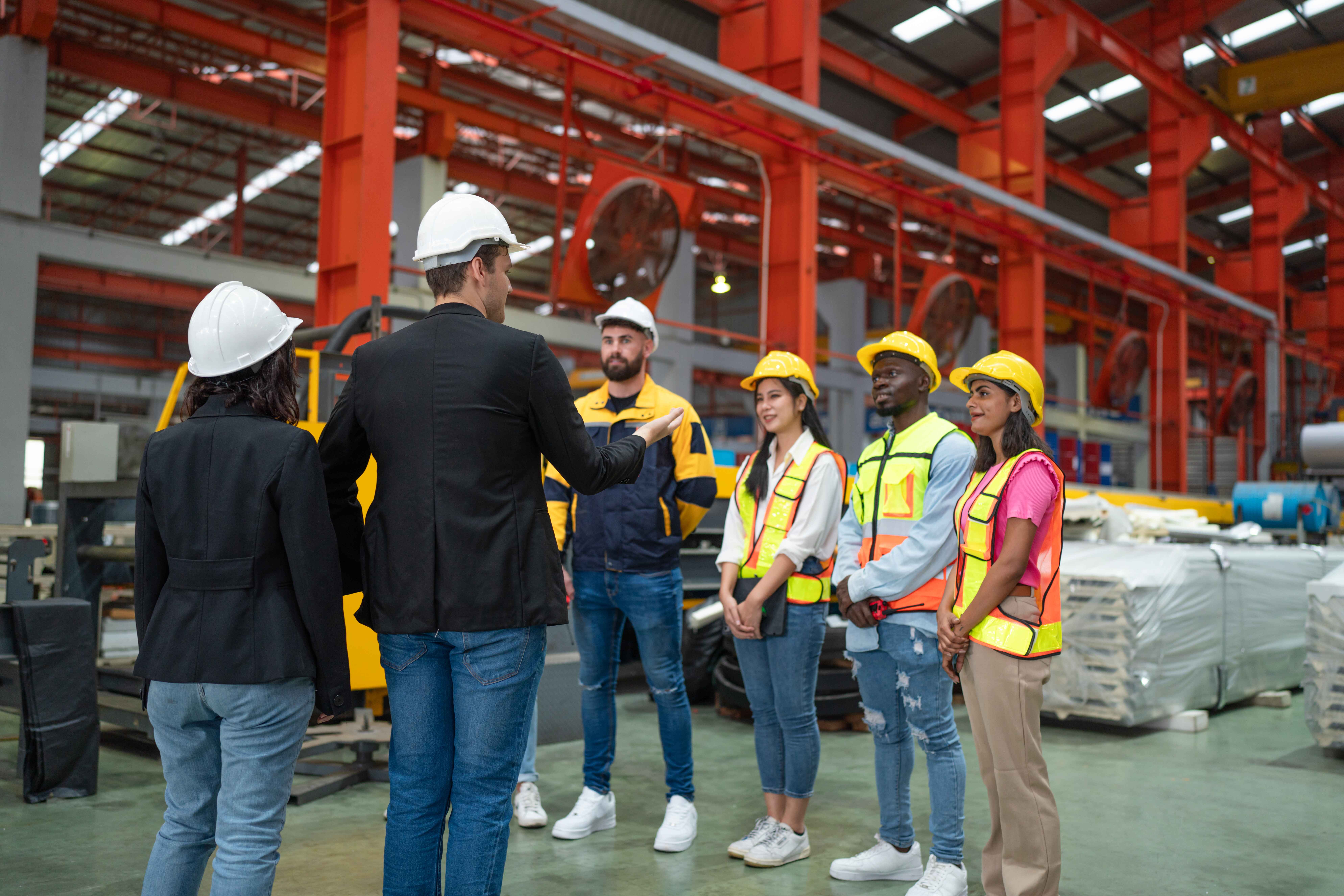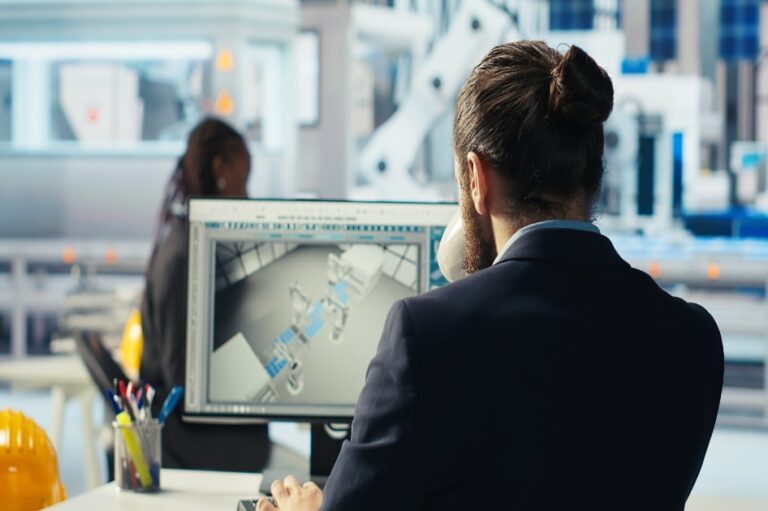Introduction
Industrial development is the backbone of economic growth, and at its core lies robust, well‑engineered structural systems. Whether it’s heavy machinery, processing plants, storage tanks, or multi-storey manufacturing units, each element must adhere to rigorous structural engineering principles. With this backdrop, Krishna Education Services (KES‑India) in Gandhinagar offers specialized structural engineering training, focusing on industrial steel structures, FEA design, connections, modular/skid systems, and advanced codes.
This blog discusses:
- The industrial growth landscape
- Why structural training matters
- Key training aspects at KES‑India
- Real‑world impact
- Career pathways
- Summary and conclusion with emoji flair
1.Industrial Growth & Infrastructure Expansion
1) Rising Demand for Industrial Assets
India’s rapid industrialization—from process plants to manufacturing hubs—has spurred demand for resilient structural systems. Whether greenfield installations like new petrochemical plants or brownfield expansions in sectors such as engineering, pharmaceuticals, or FMCG, structural integrity is critical.
2) Infrastructure Challenges
The Times of India highlights industrial challenges in Karnataka’s Lokikere zone—deteriorating roads, failing drains, and broken lighting that disrupt small industrial units’ operations
These failures, stemming from poor design and insufficient structural planning, underscore the foundational need for strong engineering.
3 )Safety and Compliance
Industrial structures must not only meet operational needs but also withstand loads, vibrations, temperature variations, seismic and wind forces, and accidental conditions. Training in multi-disciplinary structural codes—from Indian (IS) to American (AISC) standards—is essential to ensure compliance and safety under real-world stresses.
2. Why Structural Engineering Training Matters
1 )Technical Proficiency
Industrial structures demand a mix of manual design and Finite Element Analysis (FEA). Training programs like KES‑India’s teach engineers to conduct load calculations, design beams, columns, and connections both manually and via software like STAAD Pro and ETABS
2 )Code Compliance
Designing as per codes such as IS 800 (steel design), IS 1893 (earthquake), AISC 360, and others ensures structural integrity. KES‑India offers training across Indian and American codes, enhancing engineers’ ability to work in global and domestic environments
3 )Real-World Application
Theoretical knowledge is strengthened by aligning it with live projects—topside offshore platforms, skid-mounted systems, multi‑storey steel frameworks. KES‑India’s hands-on modules ensure engineers can design and optimize structures for industrial scenarios .
4 )Hands-On Software Training
Industrial designs require robust software solutions. Courses such as “Comprehensive Industrial Steel Structural Design” and “Industrial FEA Design” teach STAAD Pro, ETABS, and other tools within workflow contexts, enabling engineers to simulate realistic load cases and evaluate results effectively
5) Modular/Skid & Connection Design
Modular units (skids) streamline construction, transportation, and installation. Training in skid design, connections as per AISC and European standards, teaches engineers to bundle systems optimally with safe load paths and joints
3. Key Training Pillars at KES‑India
1) Structured Training Tracks
- Comprehensive Industrial Steel Structural Design—manual & STAAD Pro, real project focus
- Industrial FEA Design—STAAD Pro applications in mechanical structures
- Steel Connection Design—bolt, weld, code-based design (AISC, Euro codes)
- Modular/Skid Structural Design—skid units with code compliance
- Advanced Industrial Steel Structural Design—complex, large-scale structures via international standards
- Beyond theory, these courses emphasize live applications, preparing students for real industrial scenarios.
2) Practitioners-Led Learning
Headed by Paras Prajapati, with 18+ years of offshore steel structure experience from firms like L&T, Keppel FELS, Allseas, and Worley Parsons, the institute brings hands-on learning to the classroom
3) Flexibility & Accessibility
Located in Gandhinagar, KES‑India offers both online live sessions and offline classes, enabling engineers nationwide to enhance their skills. The training aims to build a strong knowledge base for industrial design practice
4. Real-World Benefits of Structural Training
1) Optimizing Industrial Costs
Knowledge of load paths, efficient connections, and modular systems reduces material wastage and labor costs. FEA-based inspection and design reduce trial-and-error during manufacturing and erection.
2 )Improving Safety and Longevity
Correctly designed steel structures resist collapse, vibration fatigue, and environmental factors like wind, seismic events, and temperature fluctuations. Modules on seismic-resistant and impact design ensure resilience.
3) Compliance and Licensing
Certifications guided by code training help engineers in licensure and approval processes. Competency with AISC, Euro, and IS codes ensures acceptance from regulatory bodies and clients across sectors.
4 )Project Execution Efficiency
Proper training leads to better constructability, fewer engineering changes, faster installation, and reduced rework, thereby shortening project timelines and costs.
5) Environmental Sustainability
Lean, load-efficient structures use less material and reduce carbon footprint. Modules on optimization in steel design directly contribute to sustainable construction practices.
5. Career Roadmap and Opportunities
1) In-Demand Design Professionals
Training transforms freshers and experienced engineers into candidates capable of handling core industrial design responsibilities. Career milestones include:
Junior Engineer → Design Engineer → FEA Specialist → Project Engineer → Lead Structural Engineer
2) Agency & Consultancy Roles
With credentials in code-based design, FEA skills, and connection detailing, graduates can join EPCM firms, offshore consultants, and structural contractors.
3) Cross-Domain Mobility
FEA and connection design skills are transferrable to sectors such as oil & gas, power, mining, mechanical structures, and civil applications—broadening career pathways.
4 )Research & Development
Advanced coursework supports careers in R&D labs like CSIR-SERC Chennai, which offers structural analysis, testing, and rehabilitation training
5 )Training & Education
Experienced professionals can transition into academia or corporate training, conducting workshops or consulting on backbone infrastructure.
Conclusion
Industrial development demands resilient, efficient, compliant structural design—training through institutes like KES‑India builds the knowledge and skill-set engineers need. With hands-on STAAD Pro and FEA sessions, real-world applications, international code compliance, and expertise from seasoned professionals, this training:
Enhances safety, structural integrity, and regulatory compliance.
Optimizes costs, material usage, and project timelines.
Empowers career growth across sectors—consulting, EPC, R&D, and education
By bridging academic knowledge and industrial application, KES‑India’s training ensures engineers are equipped to shape India’s industrial future with strong, lasting infrastructure.
Final Thoughts
Empowered with knowledge, precision, and software proficiency, tomorrow’s engineers will build the strong, safe structures that drive India’s industrial journey.
Interested in transforming your career and contributes to robust industrial infrastructure? Enroll now at Krishna Education Services, Gandhinagar. Contact them on +91 840 137 0197 or write to contact@kes‑india.co.in. Here’s to building a resilient industrial future—stronger, safer, smarter!



